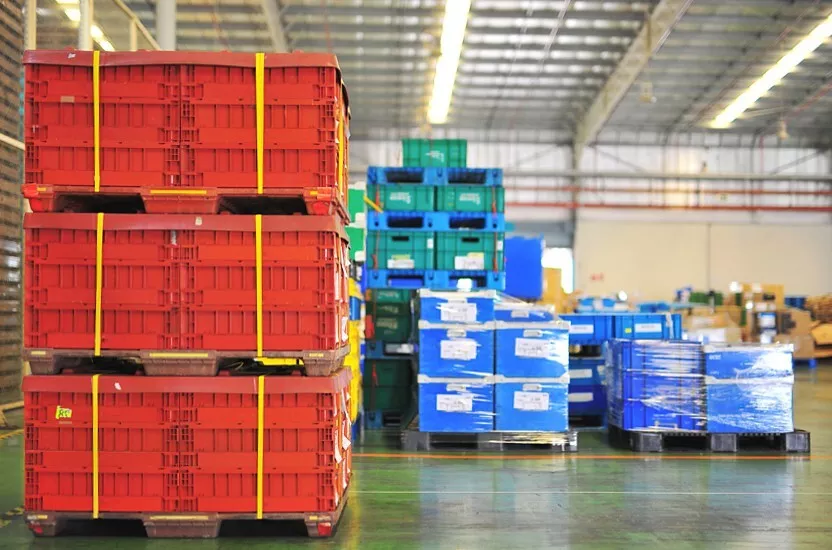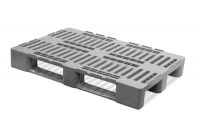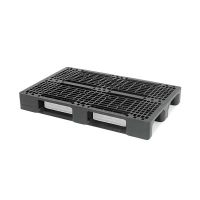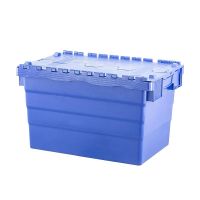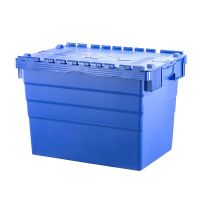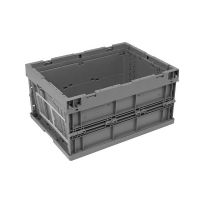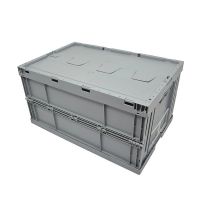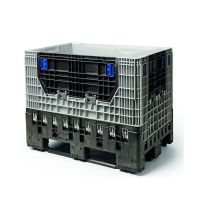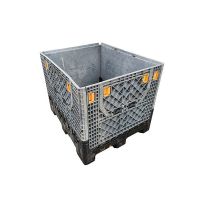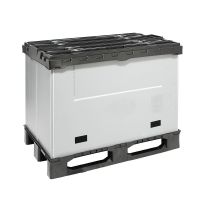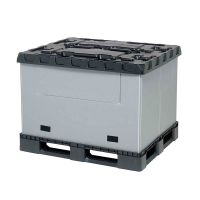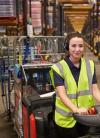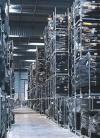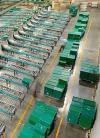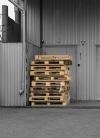A recent survey by Nielsen found that 81 per cent of consumers said it was important or very important for companies to implement changes that would positively impact or at least reduce environmental damage. In the same questionnaire, "73 percent of respondents said they would definitely or probably change their consumption habits to reduce their environmental impact, while 38 percent said they would pay higher than average prices for products made with sustainable materials." As the global market responds to this shift in consumer preferences, there has been strong interest in reusable packaging, green supply chain management and zero waste strategies.
From an economic perspective, these efforts result in huge savings and increased sales for large and medium-sized companies. As efforts are made to improve supply chains, manufacturers around the world are switching to the use of reusable packaging. From automakers to industrial automation, entrepreneurs are finding that the use of reusable containers is the future of logistics.
Redesigning supply chains, investing in new packaging for product distribution and creating cost-effective return processes can be challenging at first. However, even small steps towards sustainability contribute to progress in this area. One of them is using the packaging workflow management service, which will make your job easier because you will have full knowledge of the amount and location of packaging.
Reduce waste by choosing reusable packaging
The best packaging solutions are those that, in addition to optimal cost levels, can make maximum use of packaging space so that all products can be easily packed and stacked, while reducing packaging waste.
Reusable packaging is used to reduce waste, costs, transport damage and enable JIT (Just-In-Time) deliveries.
Designed to work in a closed-loop, reusable plastic containers, pallets, or crates are used multiple times throughout their lifetime before being recycled and reprocessed into other packaging products. Reducing the waste caused by single-use packaging is one of the main environmental factors to consider when choosing a returnable packaging system. In addition, reusable packaging can help to improve work organisation as it is often easier to handle than, for example, packing goods into cartons each time and wrapping the load in plastic on a pallet.
Pooling: the life cycle of reusable packaging
Pooling, that is the lifecycle of packaging is based on the long-term use of specially designed packaging for specific supply chains, followed by regular maintenance and remanufacturing so that it serves for as long as possible without harming the environment.
For example, reusable containers are loaded with products and shipped to their destination, then empty containers (the same pieces) are shipped back to the same supplier, refilled with products and this cycle is repeated over and over in a closed loop. In some cases, it is an open system, where reusable packaging (e.g. EPAL pallets) is used by many different suppliers and they all share a common packaging pool.
Today, many companies are using the services of companies that manage the circulation of returnable packaging, as well as switching to recycled plastics and reusable transport packaging.
The following are some examples of packaging that can reduce waste and even save money in the long run by switching from single-use to reusable products.
Instead of cardboard, foil, or disposable media, choose returnable packaging
Euro/EPAL pallets
Euro Pallets fit perfectly into the closed loop concept of reusing resources. Standardised pallets are easy to handle (forklift access from 4 sides of the pallet), very strong and durable. They are made from wood from certified sources and have a long life cycle.
Recyclable plastic pallets
A good alternative to wooden pallets are reusable plastic pallets. They are durable, offer high-storage racking capabilities and provide years of service.
Nesting plastic pallets are unique designs that allow pallets to be stacked on top of each other, helping to reduce transport costs and CO2 emissions. An example of such a nested pallet is the lightweight export pallet 1200x800mm.
Nesting containers with attached lids
Changing disposable cardboard boxes for plastic distribution containers with lids is beneficial because of the cost savings in supply chains. It is also much more durable and long lasting. Such containers are maintenance-free and can be nested to save valuable space during return transport. According to the Reusable Packaging Association, distribution containers use 40% less total energy, produce 95% less solid waste and generate 29% fewer total greenhouse gas emissions compared to single-use cardboard boxes.
The savings also come from the fact that you don't have to buy these containers outright, but can rent them from Rotom
Folding crates
Plastic pallet-sized bulk containers have become commonplace over the last few decades, providing robust protection for the goods being transported without generating waste.
Folding plastic boxes are relatively lightweight and extremely durable. They have many options like folding side walls, nesting, which makes return transport more efficient. For example, the Magnum Optimum crate measuring 1200x800 mm is designed to be robust and designed for "heavy and intensive use".
All reusable packaging is also available for rental. As a pool operator, we provide suitable carriers to customers, and we also control their quality by performing regular repair and maintenance service. We ensure that the media remain in circulation as long as possible.
Benefits of using returnable packaging in pooling
#1 Customer does not have to constantly invest in disposable packaging, but benefits from the rental of returnable packaging. This is very practical when you don't want to waste time and incur additional costs for packaging management, but you are primarily concerned with time and profit.
#2 Standardisation of packaging results in savings in return transportation, thereby reducing the negative environmental impact in the form of CO2 emissions.
#3Optimising loading times and storage space utilisation, thereby gaining full control over packaging costs.
#4 Reusable packaging is standardised, meaning it can work better with automated systems. This reduces jams and improves product flow through the supply chain, with little or no system downtime.
It is time to invest in innovative supply chain solutions that embrace and support a closed-loop economy. By investing in reusable plastic packaging, companies can support supply chain sustainability, provide a competitive advantage and prepare for future profit growth.
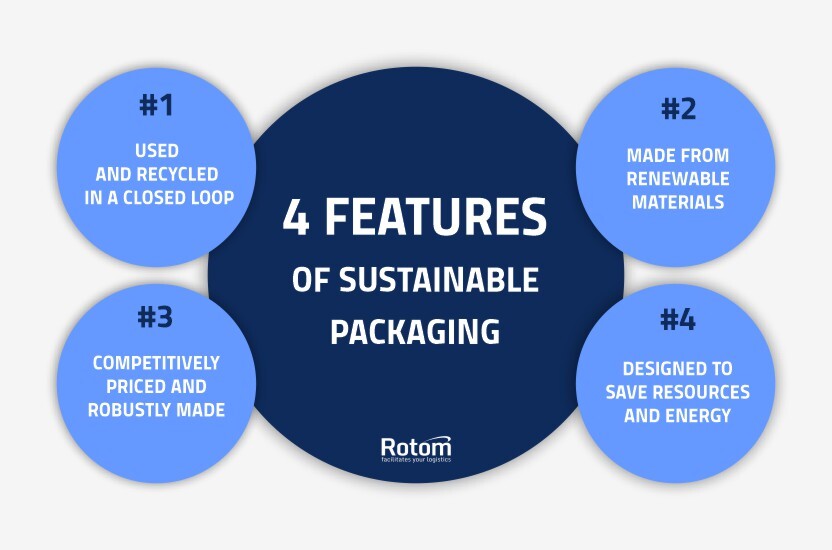
We take care of packaging performance in your supply chain
Today's supply chains are rapidly changing and becoming increasingly complex. Coupled with customer demand for packaging reusability and in line with the concept of sustainability, companies are looking for solutions that deliver superior performance and cost savings while driving profits.
As experienced packaging suppliers, we offer reusable rental, pooling and packaging management services to track packaging, maximise usage and recycle packaging appropriately at the end of its useful life.
If you have any questions about reusable containers or more sustainable choices for your business, contact us for a free consultation!


